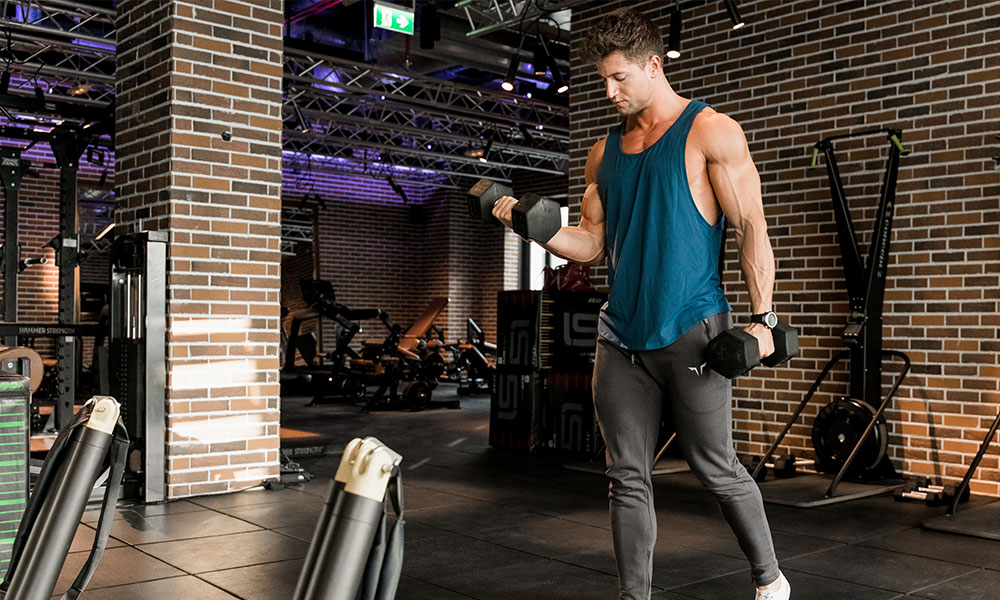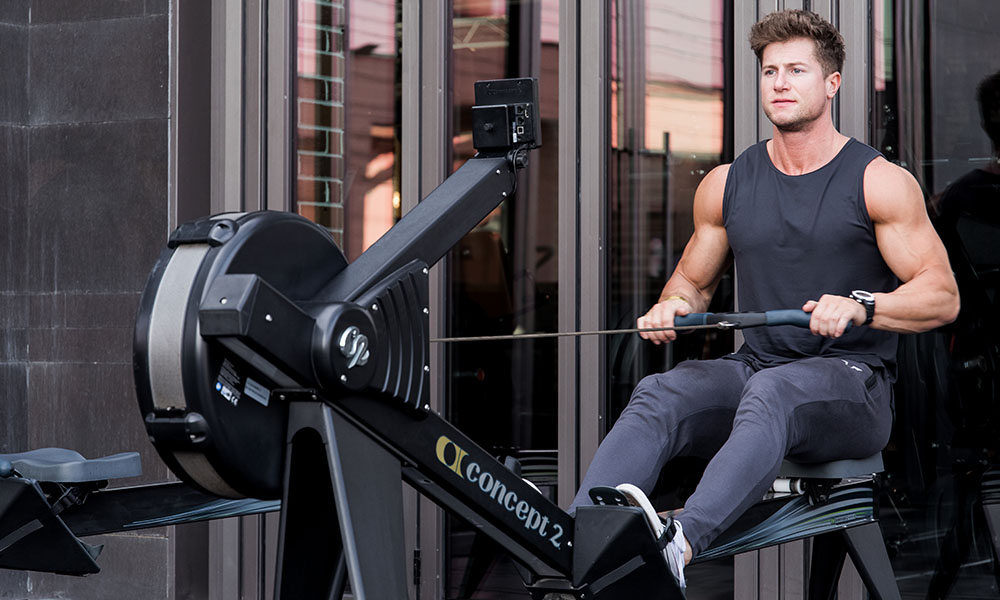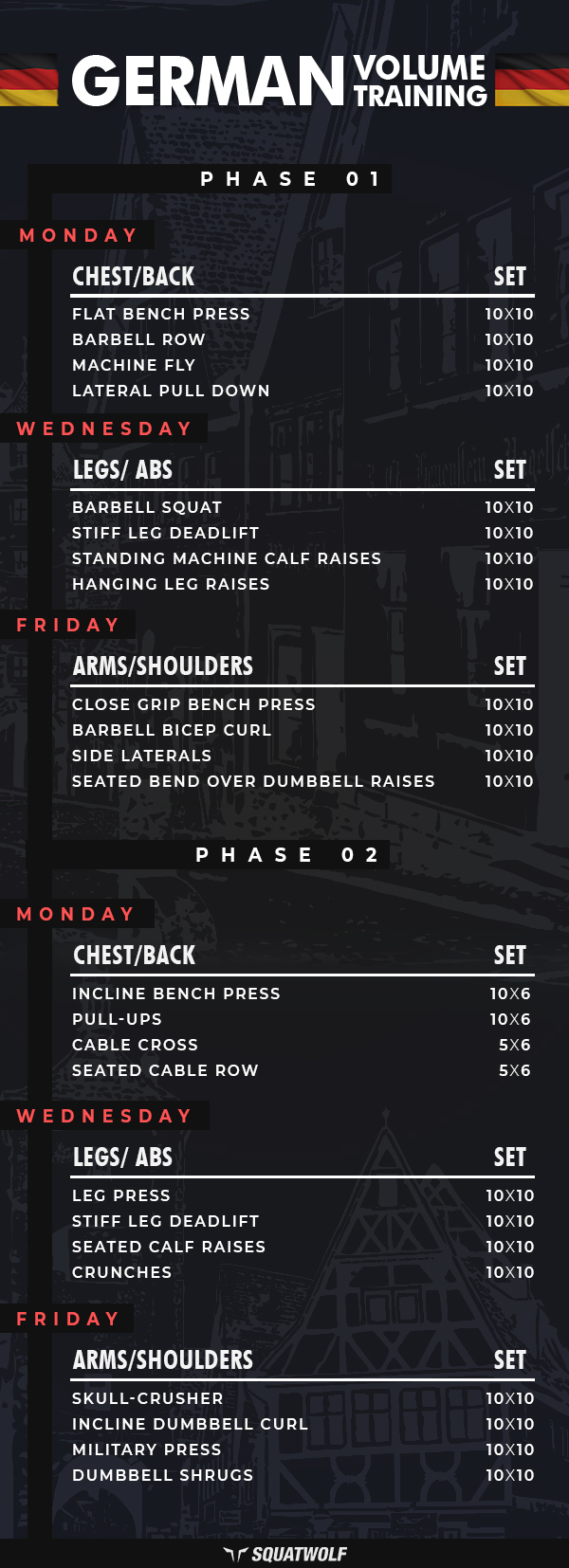German Volume Training (GVT) – Summary
German Volume Training (GVT), also known as the “Ten Sets Technique,” is a robust muscle and strength-building program. Made popular by fitness experts such as Rolf Feser and Charles Poliquin, GVT is made up of intensive compound exercises with 10 sets x 10 reps method, and moderate weights (about 60% of one’s one-rep max). With minimal rests and heavy lifting, it optimizes muscle engagement and building. Split into phases, this training method is recommended for mid to advanced lifters whose fitness levels have become stagnant. To successfully complete the GVT, you need to focus on heavy lifting with technique, consuming a protein-rich diet and giving your muscles enough time to rest and recover.
What is German Volume Training | Rest-Pause Method | Key Considerations | Overload Mechanism | Workout Routine | Key Takeaways | FAQs
If you’ve ever wanted to get ‘jacked’ in 3 weeks, stepping into the gym and lifting for the first 3 months consistently must’ve changed that! Most guys (or gals) want those Terminator-type of gains when they start working out. But building visible muscle and gaining mass is a time-taking process that requires consistent effort.
However, there are always some training programs that garner better results than others. And this is where the German Volume Training program facilitates you!
What is German Volume Training?

Sometimes known as the 10-set workout technique with more sets and reps, and short intervals in between, this training program is effective in breaking through strength plateaus and promoting hypertrophy.
In simple words, German Volume Training is an intense program which consists of high volume and little rest. Introduced by German weightlifting trainer, Rolf Feser, this program consists of high number of reps and sets, for example, ten reps per set and ten sets of a barbell bench press. This workout develops strength, muscles and even your skeletal structure.
This program was performed by Canadian Olympic silver medalist in weightlifting, Jacques Demers. Jacques was known for his massive thighs in the weightlifting community, and he credits GVT for his fantastic level of hypertrophy. This method was also used by other athletes such as Bev Francis, who used this in her early bodybuilding days.
Since you are submitting your muscles to an extensive volume of repeated efforts, specifically, ten sets of a single exercise, this program targets a group of motor units. The body tends to adapt to the stress by hypertrophying the targeted muscle fibers. This program specifically adds muscle at a much faster rate.
Pair this training program with diets such as the Vertical Diet to boost your muscle growth and build mass.
What Does The Rest-Pause Method Do?

The rest-pause method is great if you are looking to lift heavier weights. This high intensity helps you recruit muscle fibers with a higher threshold, and enables you to overcome strength plateaus.
Basically, the Rest-Pause method is breaking down your set into mini-sets and taking a short rest in between. There are two different ways you can incorporate this i.e. either hypertrophy or strength training.
1. Hypertrophy
Nobody said this type of training will be easy and the Rest-Pause Method for hypertrophy is sure to push you to your limit. It is advised that even though this method will help you see muscles almost instantly, only do these when you have the energy and want to spice up your workout.
To simply explain, there are 3 steps to performing the Rest-Pause Method for hypertrophy:
- Perform a set as you would with your given 6-10 rep weight and then set the weight down
- Take 15 seconds of deep breaths, pick the weight back up, and rep to failure
- Repeat step two as many times as you can
You perform three workouts over five days for 30 days to complete this training ritual. With the help of this method, you will engage muscle fibers much more deeply. This means you will get a better pump, helping you climb out of strength ruts. This is a great way of creating a solid mind-muscle connection as well.
Build super human strength with this GOT-inspired Mountain workout for hypertrophy!
2. Strength Training
This training focuses on lifting heavy weights while doing low reps and long periods of rest. Here are the steps that you need to take to perform this type of training:
- Choose a weight that is 85-95% of your 1RM
- Perform a 1 rep with this weight
- Rest 30-45 seconds
- Repeat about 6-10 times
This is a great way of increasing your strength. It trains you to lift heavier weights while progressively overloading, allowing your body to adapt to heavier weights with each workout. In this approach, you divide your workouts based on individual muscle groups such as chest, back, shoulders, biceps, triceps and leg days. This allows you to max out your heavy weights, giving a single muscle group 1-week recovery time.
If you struggle with strength, consider trying Calisthenics for beginners to boost your body’s natural strength and power.
The combination of these two programs is what the German Volume Training is all about and that is why it’s a perfect way to increase both muscles and strength.
German Volume Training Considerations

If you’re hopping on the GVT bandwagon, you need to make sure you take all the key considerations into account.
Set Your Goals
When you start of German Volume Training, you need to start with a weight that you can lift for 20 reps or until failure. Typically, this would be up to 60% of the maximum load any bodybuilder can lift.
For beginners, it is advised to use a split-workout routine i.e. push, pull, legs, rest and repeat approach.
Rest Intervals
Initially, most bodybuilders will question the effectiveness of this program since the weight is not heavy enough for them to feel anything. This will soon change because the high volume and short rest time will result in muscle fatigue. It is important to time your rest intervals because as your muscles start to fatigue, you will be tempted to take longer breaks. Surprisingly, you will feel more strength around the eighth set because of a short-term neural adaption.
Do these 5 cool down exercises post workout to boost your muscle recovery.
Tempo
It is essential to have a proper tempo while performing exercises according to this program. For long-range movements like squats, you need to have a 4-0-2-0 tempo. This means you lower yourself in 4 seconds and immediately move up in 2 seconds and continue this cycle. For short range movements like bicep curls, it is advised to have a 3-0-2-0 tempo.
Switch to resistance workouts if you’re not comfortable with weights and build your strength upward.
Overload Mechanism
Once you can do 10 sets of 10 reps comfortably, you need to increase the weight by 4% to 5%. Avoid using forced reps, negatives, or burns – the volume of the workout will take care of the hypertrophy.
Expect a painfully long recovery period. It is reported by bodybuilders that after a session of quads and hamstrings, an average bodybuilder takes 4 to 5 days to recover fully.
Make sure you’re eating right and hitting all your macros to aid your muscle recovery and growth with diets such as the DASH Diet.
Workout Routine
What would be the point of the blog if we didn’t give you a workout routine to try out for yourself? This is a two-phase program, each phase lasting six weeks.
In phase 2, you need to increase the weight by a higher percentage, bringing your RM to 80%.
Here’s your complete German Volume Training routine for phase 1 and phase 2:

This is a basic workout routine and you can hit different muscle groups based on your fitness goals or your coach’s advice!
Key Takeaways
This workout routine is not for the faint of heart. In fact, it’s been known to cause immense pain and fatigue given its high volume and intense training method. This guide is your ultimate cheat code to mastering the German Volume Training program. If you’re looking for insane gains and a body that makes all the gym buffs envy you, then this is the program you need to hop on.
Think you got what it takes? Then what are you waiting for, go out there and go beast mode!
FAQs
Yes, the German Volume Training program works. While all individuals are different with a varying set of fitness goals, this 10 reps x 10 sets training method boosts strength, builds muscles and helps you gain mass through intense training. Incorporating compound exercises with minimal rest in between sets, this training program ensures those who’ve hit a strength cap can exceed beyond it. The goal of this training program is to exhaust your muscle fibers so they can rest, repair and grow later. To make this training program a success, you need to stay on-track with a balanced diet and proper rest.
The German Volume Training (GVT) is an exhaustive training program that builds muscle, amplifies strength and helps you gain mass. It uses a 10 sets of 10 reps training method with short resting periods between sets. In addition, you use 60% of your 1-rep max weights i.e. if your 1-rep max on squats is 100 kgs or 220 lbs., then you’ll be lifting 60 kgs or 132 lbs. This high volume program gets you out of your strength cap. promoting mass gain and hypertrophy. It stimulates your muscle fibers, builds endurance and leads to gains. This program should be followed by who are at an intermediate or advanced level of their fitness journey. Not only is this training method physically demanding, it also exhausts you mentally. For the best results, make sure you’re following a balanced and protein-rich diet.
Normally, the German Volume Training (GVT) lasts about 30 days or 6 weeks. Each workout session should last anywhere between 45 to 90 minutes. There are 2 phases of the GVT i.e. phase 1 and phase 2. In phase 1, the focus is on allowing your body to adapt to this high volume training program with 60% of your 1-rep max, 10 reps x 10 sets of compound exercises with 45 seconds to 1 minute of a rest in between. The focus of phase 2 is on increasing the intensity of your workouts to boost muscle growth and mass gain, by lifting 80% of your 1-rep max, 6 reps x 10 sets of compound as well as isolated exercises with the same resting period as phase 1.

